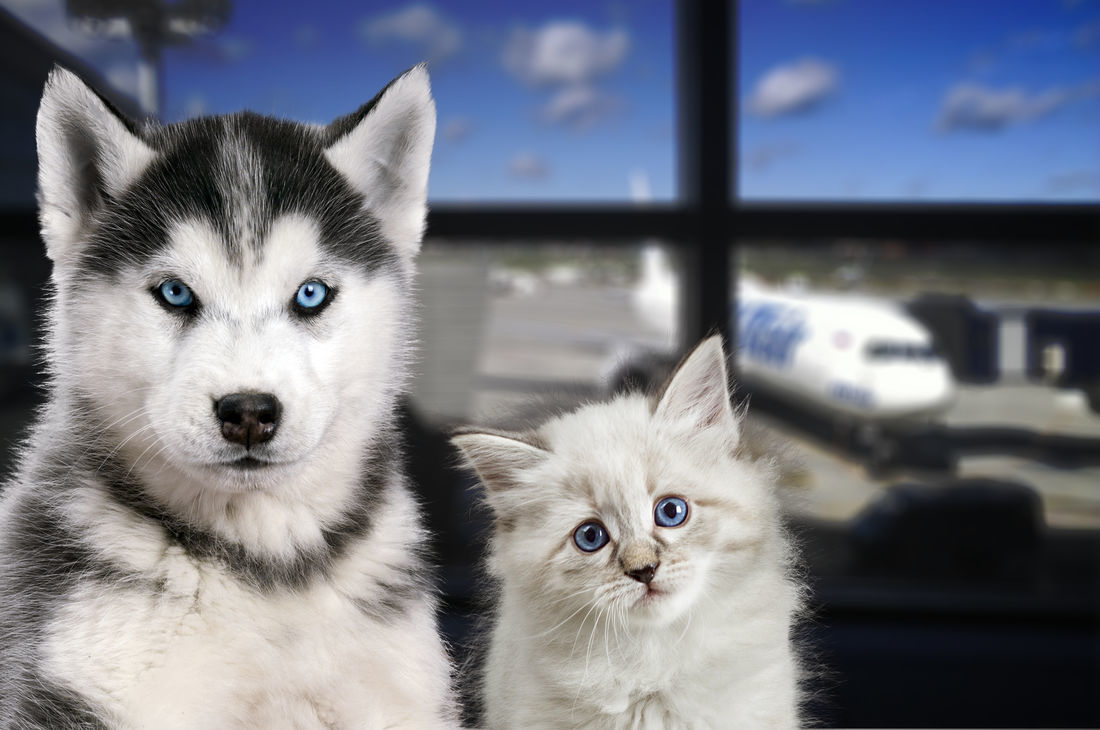Don't let the fur fly on your next journey with your pet. Whether you're moving home, planning a great escape or taking the trip of a lifetime with your favourite companion, there are a few foolproof ways to make that flight more palatable whether you have two legs or four (or none, in the case of snakes and fish!).
It's important to note that, in Australia, all pets are required to travel in the baggage or cargo hold –generally located under the main cabin. It has a pressurised, climate-controlled space, especially for animals. Most pets sleep during the flight, but if your furry friend is particularly nervous or highly strung, you might want to reconsider your travel arrangements.
You’ll need to arrive 90-120 minutes before take-off to ensure your friend is comfortably taken care in the freight area.
Here's what else you should do before your flight:
Talk to the airline. Some airlines have restrictions on the types of pets you can travel with. Dogs, cats, birds, guinea pigs, rabbits and the like are allowed. Brachycephalic dogs like pugs and bulldogs can only fly for five hours at a time, and their crates must be double minimum size. English staffies are likely to chew or be destructive, so they must travel in wooden crates only. For fish and reptiles, you may need to make special arrangements. If in doubt, it pays to do your research first.
Consult your pet’s favourite vet first. Before you put your furred or feathered friend on a plane, it's vital your vet gives them a complete bill of clean health. Airlines require your pet is safe to travel, in good health and older than eight weeks before they'll allow them on the plane. At a minimum, they'll need to be up to date on their vaccinations, worming and flea treatments. Make sure you get your vet's tick of approval in writing – you may need to demonstrate your pet's bona fides at the airport.
Prepare your pet carrier in advance. Every airline requires pets to travel in an approved container or crate. You can bring your own or hire one from a specialist company. Make sure its large enough to let your friend stand and lie down comfortably. You can also purchase/hire secured drinking bowls to keep Fido or Fluffy well watered throughout the journey and absorbent mats that make clean up when you pick them up so much easier. If you have a chance, try to introduce your pet to the carrier in advance to cut down on anxiety – feeding them treats inside the crate or adding their favourite blanket/toy can also help.
Walk before you fly. For cat and dog friends, some exercise before the flight is a welcome way to calm down nerves and tire them out. Take your dog on a long walk or play a round of chase the ball until they’re panting. Cats have a habit of wandering off when you least want them to, especially if they’ve got wind something’s up. If they like chasing games, get a feathery toy and give them a workout around the house, or take them into the garden on a cat lead. Remember animals can sense your stress – and there’s nothing more stressful than preparing for a long trip! Try to keep as calm as possible for your pet’s sake.
Remember, also, to pack everything your pet needs for the trip well in advance, such as vet certificates, ID collars, toys, food, leashes and any medication they require. Wet wipes for easy clean-up after the trip are a good idea, too. Follow all these steps, and you'll be flying with your furrever friend with poise!



